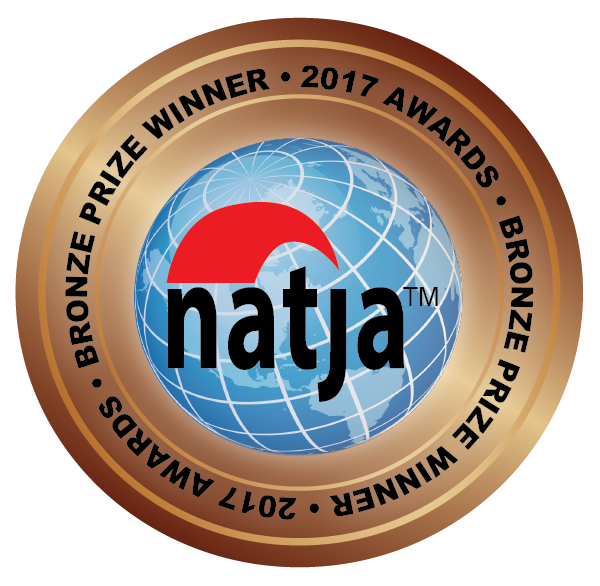I wake early to birds and make my way to the kitchen where my friend is heading out the door to drive her teen daughter to school.
Drive? I raise my eyebrows. The weather is gorgeous. We’re in California, for heaven’s sake.
“Nobody walks in LA,” my friend laughs. It’s my first visit to her place, this home they rent in Hermosa Beach, with views of the Pacific if you look out the second floor window.
Nobody walks?
I lace up my shoes, the screen door slapping shut behind me.
I turn left toward the ocean. My friend’s place is on what they call a “walk” street, meaning the tiny gated yards open onto an oversized sidewalk with no cars. The large-windowed homes that line the street lend themselves to peeking and I am an unrepentant voyeur. It’s a steady downhill to the ocean where I make a left at The Strand lined with more glass-fronted homes into which I mentally insert myself and imagine my California life. The Strand runs alongside the beaches of Hermosa, Manhattan and Redondo. Perhaps nobody walks but they certainly skateboard and jog, mostly while talking on cell phones.
I make a left at the pier and walk past the surf shops, not-yet-opened restaurants and the racks of t-shirts, flip flops and bathing suits. I spy a path covered in wood chips, which I later learn is an abandoned rail bed. In 1986, the tracks were pulled up and a 3.7 mile greenbelt was born. Though suburban streets run parallel, the path offers something of an oasis, buffered by eucalyptus and pepper trees. I follow it to the main street of Manhattan Beach, turn left again toward the ocean and pick up The Strand until I’m back at 30th street in Hermosa, where I walk uphill toward my friend’s home and empty the sand out of my shoes.
I do this each morning for the four days I’m there, each time expanding my route, my routine familiar in an unfamiliar place.
Many years ago I attended a conference where a woman, descended from a Polynesian tribe, described how her ancestors were renowned for their ability to navigate by the stars. I’m amazed because, as my early history makes clear, I can get lost just about anywhere. And indeed I have. My family jokes that, after my year spent getting lost in pretty much every country in Europe when I was 24, it’s a miracle I found my way home. I suspect my ancestors were headed for somewhere else entirely until, lost, they landed on Canada’s shore and decided to stay. But this woman insists. Within each of us, she says, is this ability to navigate. To know which path to take. To find our way.
Which is, for me, where walking comes in.
From those first teetery, gleeful steps at around one year of age to an ability to walk out, walk away, walk toward, walk on, is there anything as liberating as putting one foot in front of the other and propelling ourselves forward? My feet, however, are more than simply a mode of transport. While I can’t find science to confirm what I know to be true—that the muscles in my feet draw and then send a map to my brain—there’s no denying that it works. I walk to orient myself. To know where I am in this world.
There is science, of course, lots of it, that draws a straight line between walking and our body chemistry. Walking gets our blood pumping faster, to all our muscles and organs and to our brain. Experiments show that people perform better on tests of memory and attention after walking. Walking helps create new neural pathways in our brains.
All of which, I dare to say, is proof that walking helps me map my world.
My love of walking as a way to orient myself puts me in good company. Well-known walkers/thinkers include Henry David Thoreau, Walt Whitman, and my sister-in-getting-lost, historian and essayist Rebecca Solnit. In her book Wanderlust: A History of Walking, Solnit tells us that walking “is both means and end, travel and destination.”
What I think she’s telling me is that I’m right: walking is map.
A year later, I’m back in LA, this time with my daughter. On our way back to my friend’s place in Hermosa from Santa Monica, I convince my daughter to take a bus rather than splurge on a cab. As usual, I’m convinced I know where we’re going. As usual, I am wrong. The ride seems interminable and we peer out the window for something—anything—that looks familiar. Finally, I grab my daughter’s hand and exit. I trust my feet to find their way and, sure enough, 45 minutes later, we’re back at my friend’s on 30th street. My feet sought out familiarity and found it.
There’s much to be said for how walking engages our senses. The smells of Los Angeles where I walk include the clean scent of what locals call June Gloom, the heavy fog that rolls in each morning. It includes the minty sweetness of the eucalyptus and, of course, the exhaust of all those Angelenos who won’t get out of their cars. My feet absorb the differences. The Strand has a veneer of sand, blown from the beach. The piers are solid concrete. The wood chip of the greenbelt gives beneath my footsteps.
I eavesdrop on snatches of conversation. I stop and examine a washed-up… starfish, maybe?... near the beach. I smile at the vendors as they slide open their shutters, chat with the waitress as she takes the chairs off the tables and arranges them for lunch. Walking brings me to people. We’re on equal ground—there is no air-conditioned comfort that removes me, no barrier of glass or class.
Two summers ago, I took my family to Italy. Jet-lagged, while the others slept that very first morning, I put on my shoes and took the ancient lift to the main floor. I wound through the courtyard then heaved open the enormous doors that opened to the street. The internet site promised me that our apartment was a stone’s throw from The Vatican and I am nothing if not an optimist with an abiding faith in the internet.
I set out, the day already warm. The streets were mostly empty and shopkeepers were just beginning to bring their wares onto the sidewalks for the tourists. I turned right at the first block, then right again, and again until and I was back outside the massive door of our apartment. I keep going, turning right at two blocks, at three, then four until I’ve made consistent expanding squares. Not only have I discovered The Vatican—indeed a stone’s throw if one is a particularly gifted thrower—but I’ve smiled at the pizza man setting up his tables, I’ve window shopped some gorgeous Italian shirts that I plan to purchase for my son, whose luggage didn’t follow us to Rome, and scoped out the menu at a restaurant for lunch.
Later that first day, rushing to meet a tour guide to Rome’s Jewish ghetto, we’re deliberating about which direction to go. Follow me, I tell everyone. I know the way.





